




As a child of the 1980s, I didn’t grow up with toys that did a whole lot of talking, flashing, or moving. We had to make our own “VROOM VROOM!” sounds and say “SMASH!” when our plastic action figures engaged in battle.
I fondly remember owning a bright yellow Tonka dump truck that was made of real steel and weighed what felt like a hundred pounds (I’m sure it was more like 5 lbs). When you loaded it up with rocks and moved it along the gravel it made a satisfying CLANG CLANG sound, like a masculine toy should.
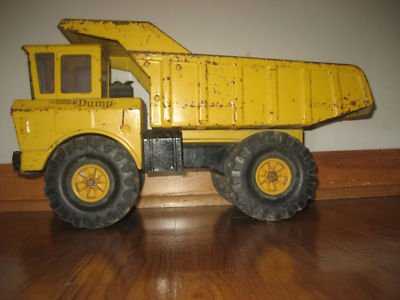
If you fell on it, pinched your fingers in a moving part, or dropped it on your toes it would genuinely hurt, enough sometimes to draw a bit of blood, especially if you slammed your knee into a sharp metal corner. Playing with a scale model that felt, weighed, and caused injuries like the grown-up version was thoroughly satisfying.
[You can read my 2011 article about the dumbed-down blandness of modern toys.]
I feel the same child-like excitement driving my dad’s 1978 Toyota pickup, a battered and bruised piece of machinery that he bought for $500 nearly a decade ago. It only sees use a few times a year, hauling light yard waste to and from the dump. It’s had a starter, clutch master cylinder, and a few oil changes, but otherwise it’s carried on without much incident.
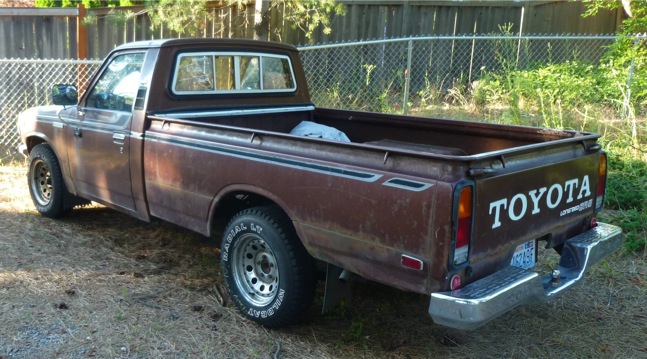
The only mechanical exercise it seems to get is when I’m in town visiting. When I fly to Washington I usually end up staying for an entire month and if I’m not borrowing a friend’s car, renting can become prohibitively expensive. As a result, I often find myself behind the wheel of this old bruiser.
Admittedly, back in 2005, I hated driving it. The exhaust is shot, the interior is full of dirt and leaves, the clutch is a bit heavy, and it rides like… an old truck. There’s no air conditioning, no radio, and everything is manually operated. But since then, I’ve abandoned my snobbery and allowed my automotive tastes to evolve.
In my past pursuit of luxury, I’ve made hefty monthly payments on everything from BMW convertibles to Escalades and Range Rovers. I’ve tolerated the complications and expenses of owning technologically complex high-end cars and I often wondered if it was all worth the trouble. Who was I trying to impress? Strangers I don’t even like?
I spent most of my early youth driving beater cars so as a result, I longed to feel clean and respectable behind the wheel of something with a bit of prestige. However, as I got a bit older, what I once perceived as luxury started to feel numb. After years of dining on expensive automotive lobster and caviar, I found myself craving a simple, honest, backyard-grilled cheeseburger. And that’s exactly what this pickup truck (known in parts of the world as the “Toyota Hilux”) is — a vehicle as basic and satisfying as the combination of ground beef and melted yellow cheese.
There’s no bullshit between you and the road nor is it trying to be clever. Toyota never intended for owners of compact pickups to park at country clubs or listen to Mozart or use them to haul their families around (though you probably could). It’s a tool for men to do work and get from place to place, a simple means to an end, and a solid one at that.
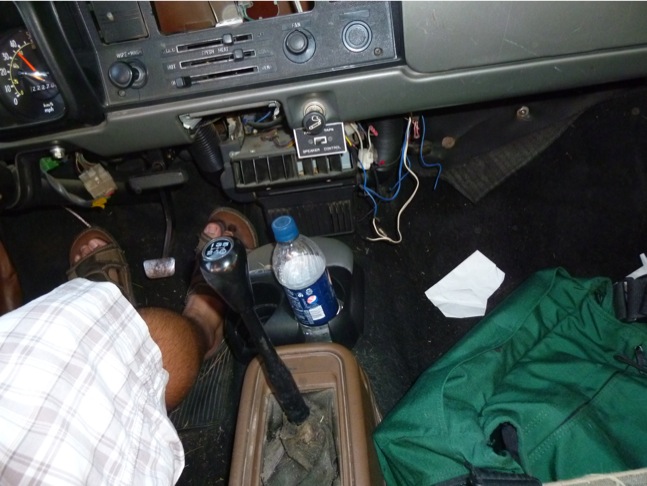
Stepping inside, you’re ‘greeted’ with a cabin that reeks of disco, invading your nostrils with the odors of aged vinyl, plastic, and various adhesives. The closest you’ll get to the delicate scent of Connolly leather is by parking it at a Jag dealer. There used to be a radio but it was long gone by the time my dad bought the truck. There’s a heater below and air vents on each end of the painted metal dashboard. The ashtray is missing but someone added a handy little cupholder and storage tray behind the shift console.
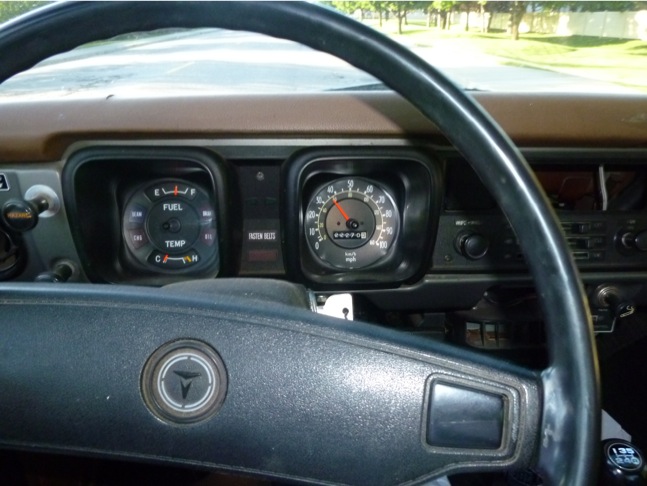
Instrumentation is sparse but readable. The backlighting still works and the warning lights are fully functional. It’s amazing that after more than three decades of service, everything has held up reasonably well.
The horn emits a cutesy beep that sounds like less like a truck and more like your Blackberry’s ringtone. The top of the dashboard is cracked in a few places but otherwise, after more than 200,000 miles, nothing at all is squeaking or rattling, a testament to Toyota’s build quality. I’ve driven five year old cars that had more loose bits. The doors haven’t sagged, the plastic steering wheel hasn’t worn, and the rest of the interior (other than the seat upholstery and door pockets) is still in tact.
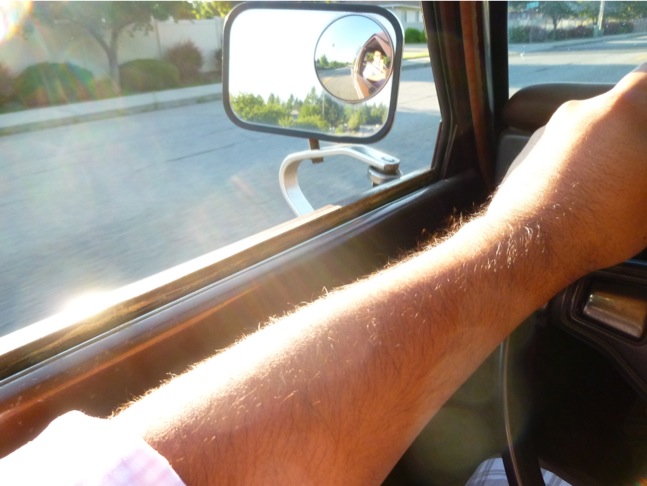
So here I am on a one-hundred-degree July day, dressed in bright white pants and a gingham shirt like the pretentious SOB I am, behind the wheel of something a teenage landscaper might drive to job sites in the summer. I briefly considered buying a broken lawnmower on Craigslist and throwing it in the back just to garnish the appearance.
After a few miles of working the long-throw 5-speed gearbox and listening to the PUT PUT PUT PUT VROOM! VROOOM! VROOM! of the carbureted 4-cylinder 20R, I caught myself in a state of bliss. I even saw myself grinning in the side mirrors (pictured above).
That moment of joy I experienced in 1985 as a dopey little immigrant kid playing with a metal Tonka truck in the dirt suddenly came back to me. This Toyota pickup, just a few years older than myself, is the culmination of all the sights, sounds, and smells that I as a child believed a truck should make, long before the F150, Ram, and Silverado became cushy commuter cars for bland suburbanites.
After driving hundreds of automobiles including my all-time dream car (the Cadillac XLR-V), this is easily among my top five most memorable motoring experiences. Ever.
And it wasn’t just the way it crashed over bumps or burbled at idle that tugged at my heart strings, it was the fact that I was behind the wheel of something worth half what my eyeglasses cost. Taking everything into consideration from fuel to maintenance to insurance, this pickup is practically free. If author and transcendentalist Henry David Thoreau was alive today, engaging in the civil disobedience and frugality he spoke of in Walden, this is exactly what he would drive to and from his cabin on Walden Pond. Liability insurance is only $16 and I managed to get anywhere from 20 to 28 mpg on regular unleaded, perfectly respectable numbers for a 2WD pickup, even for 2013. As an added bonus, parts are plentiful and insanely cheap — we’ll get to that in a bit.
Theft is a real concern for older vehicles because they’re so easy to break into but the manual transmission (which few Americans know how to use anymore) functions as a deterrent. A few years ago I was in the back yard swimming in the pool and enjoying some cold beers. Out front where I parked the truck, someone walked on to the property, smashed the rear glass, and stole the Sony boombox I left under a towel on the front passenger seat.
They felt confident enough to take their time and rifle through my burned CDs, taking U2 but leaving behind The Backstreet Boys (shaddup). I suspect the presence of a manual gearbox kept them from starting it up and taking it for a joyride, and from now on all of my CDs will be labeled “Backstreet Boys” to discourage thieves.
Unfortunately, because my dad rarely drives this truck, nothing goes wrong until I arrive in town and accumulate hundreds of miles in a short period. One night, I was driving my friend Tyler and his bicycle home when the clutch ceased to engage. We were passing through the seedy part of Spokane on Sprague Avenue. It wasn’t terribly dangerous but there was certainly a level of risk. The spot we broke down in had a homeless guy sleeping in the grass next to us and strange characters were roaming around including a few drunks and prostitutes.
Thankfully, since Tyler was with me, he helped push and I was able to inelegantly rev-match and wander up to 3rd Avenue, a safer part of town where we finally gave up and called AAA.

Unfortunately, my cell phone was dead and I found out that the 12-volt socket wasn’t working. Tyler loaned me his and we got a tow truck out within 30 minutes. He then rode his bicycle the rest of the way home while I hopped in the tow truck and headed up the hill to my dad’s.
The next day, I called my friend Bo and asked him to come over and offer a bit of advice. He discovered that the master cylinder was low on fluid and there was either a master or slave cylinder leak. We topped it off with DOT3 brake fluid and I gave the clutch pedal a few dozen pumps to build pressure. That was enough to be able to drive the truck to Bo’s garage where he and I worked on it and discovered that the slave (attached to the top of the transmission) was fine, but a new master cylinder was needed.
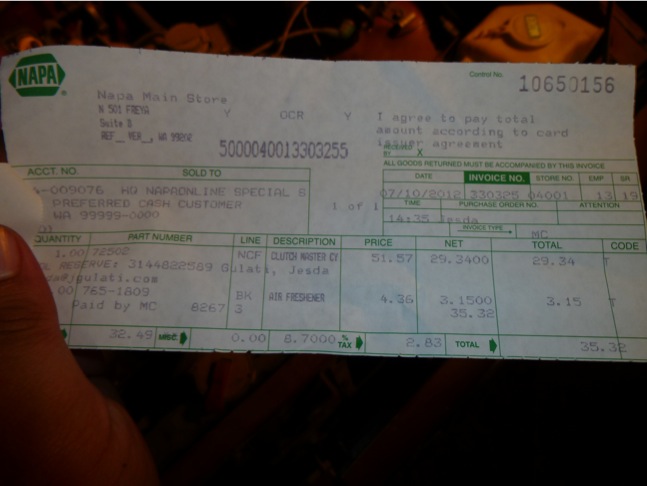
So, I went to NAPA and picked up a master cylinder, in stock for less than $30!
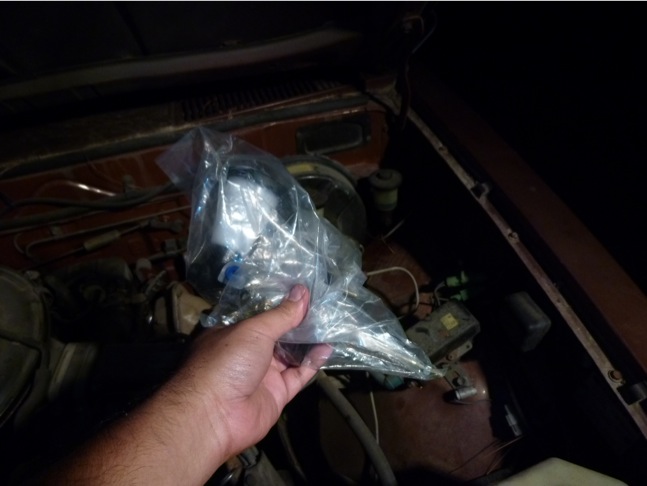
The new part came with a couple bolts.
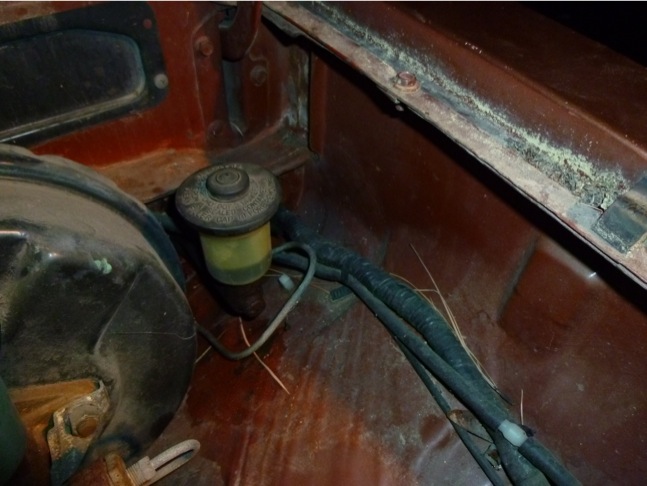
Pictured above is the old one, and you can see by the fluid stains that it’s been leaking.
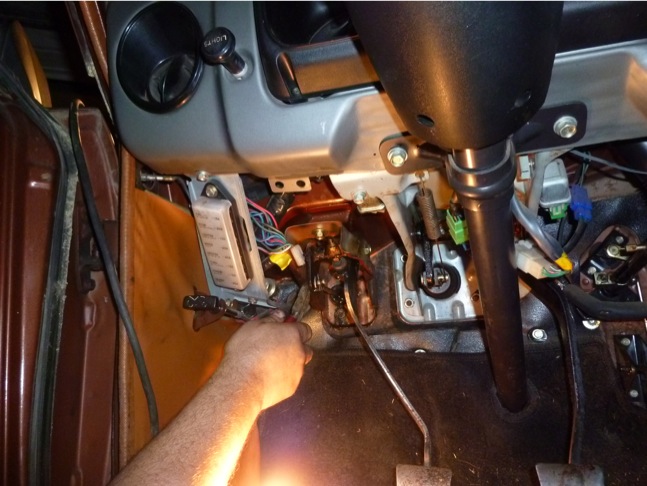
Bo moved the fuse box out of the way and removed four bolts, two inside under the dash and two outside at the firewall.
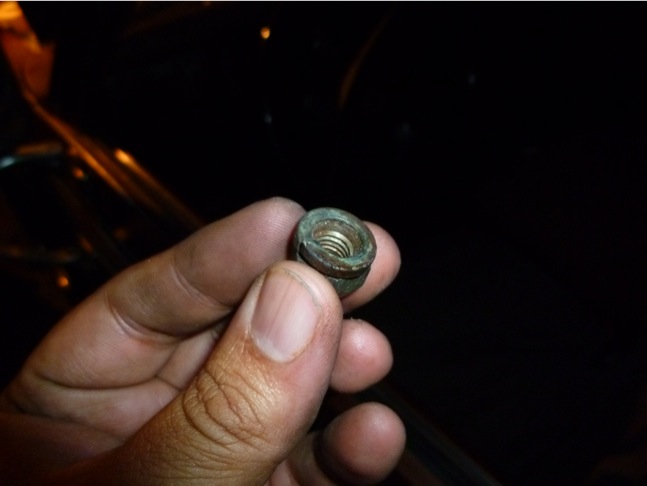
Note Toyota’s use of nuts with built-in washers. Speeds up manufacturing and reduces error.
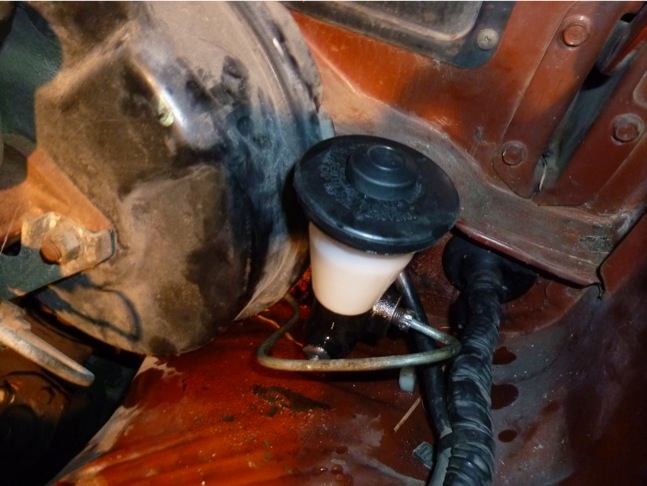
Pictured above is the new master cylinder installed. Getting the metal fluid line connected was a bit tedious and we kept dropping bolts. The most time-consuming part was crawling underneath over and over to fetch them, a bit of a challenge in the dark. Otherwise, the job was easy.
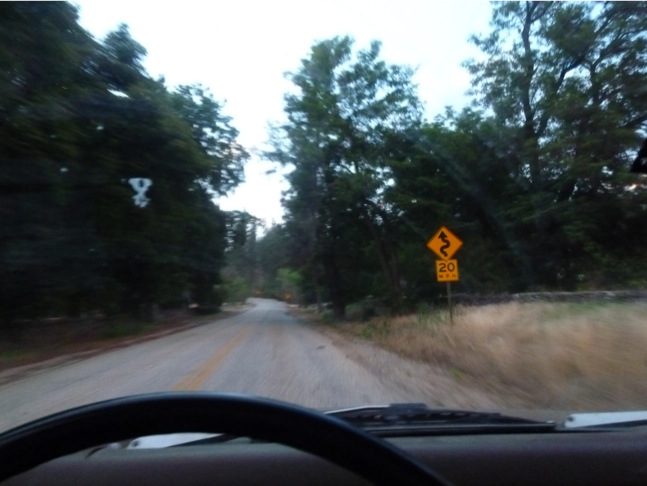
The next day, the hot weather cooled off a bit so I took the truck for a ride down some country roads. It isn’t exactly good at handling. It’s light on its feet, yes, which makes for easy acceleration from 0-30 and minimal body roll, but you can definitely feel the rear end wanting to slide. The old knobby tires are certainly no help. Still, as long as I took it easy in tight curves it was a pure delight to hang my arm out the window and hoon around the woods like a drunken redneck (don’t worry, I was sober).
The fun didn’t last, unfortunately. Later that night the oil light came on and it stalled. I managed to restart it and get it over the hill where I coasted into a 7-11 parking lot. The dipstick was disturbingly dry so I went inside to buy a couple quarts. It was still dry so I bought two more. That’s when my friend Jimmy (riding with me) noticed that a pool of oil the size of Exxon Valdez spill was spreading across the parking lot.
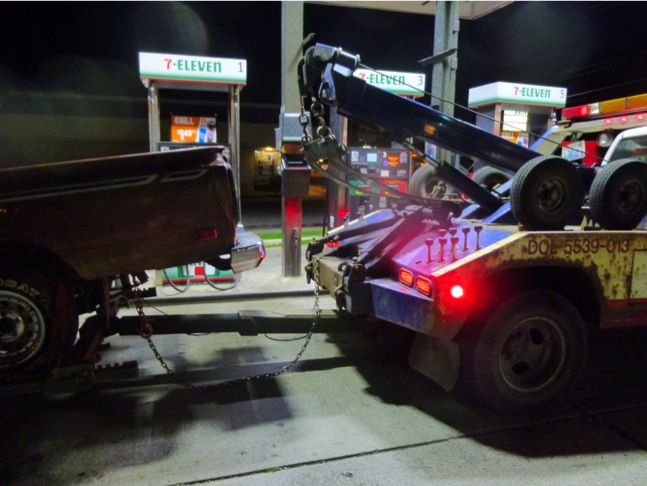
Jimmy looked underneath and noticed a hole in the oil pan with nothing in it but some kind of rubber gasket. Once again, I called AAA.
I simply assumed that the oil drain plug fell off so I picked up a new one.

However, when I looked underneath in the daylight I saw that the drain plug was still there with another hole right next to it.
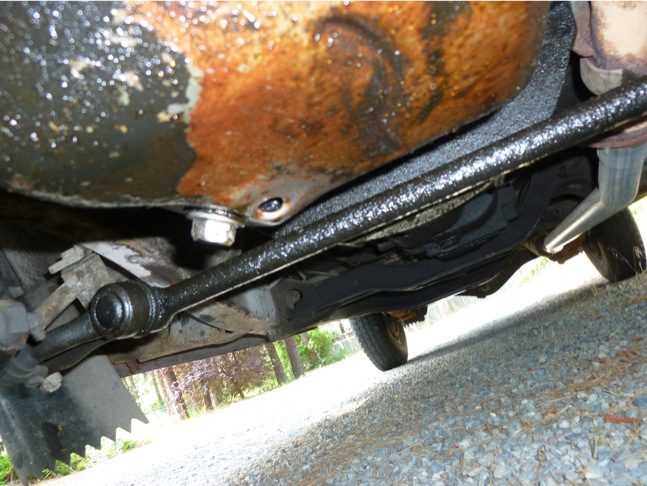
According to my dad, the previous owner patched it with some combination of JB Weld and a plug or bolt of some sort. It was clean, perfectly round hole and the challenge was finding something to fit. Ahh yes, the joys of dealing with someone’s redneck repairs.
I thought about maybe using some bolts along with JB Weld to patch it over.
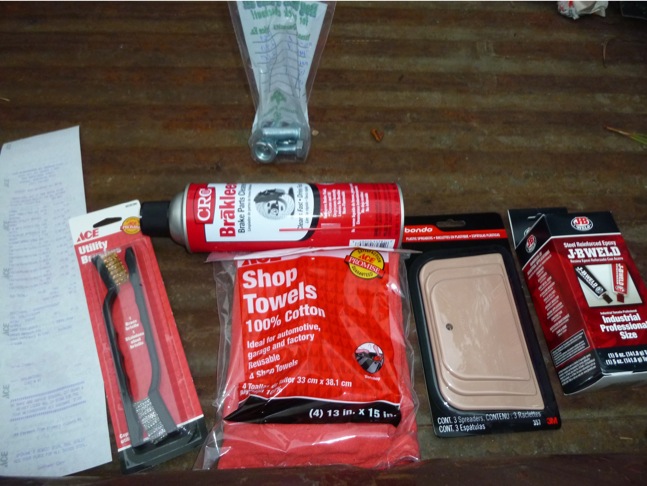
My friend Sean (I have so many generous friends in Washington) loaned me his Toyota Celica GT (review forthcoming) which I took to Ace Hardware to pick up some towels, brake cleaner, wire brushes, various sizes of bolts, and JB Weld.
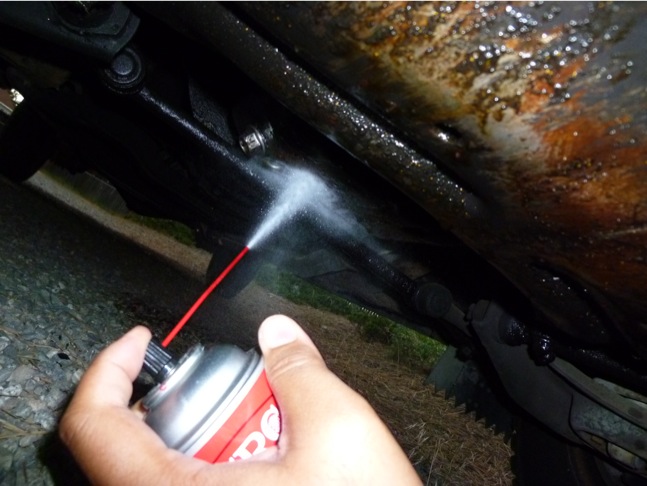
I started by cleaning underneath and removing the mess of oil.

The brush came next. Some folks on the internet suggested scrubbing or sanding a surface before applying JB Weld to improve adhesion.
Unfortunately, none of the bolts I bought would fit. I made a couple trips back to Ace but unfortunately nothing was right-sized for that odd hole. It was somewhere between M16 and 1/2”.
I was about to cave in and drive 200 miles to pick up a used oil pan at a junkyard but first, I called Bo again and asked him for more advice. He mentioned that there were universal drain plugs that you could buy, usually meant for oil pans with stripped drain plug holes, that might serve as a short-term solution.
I headed to O’Reilly Auto and picked up two kinds, a 1/2” one and a universal one with a wing nut.
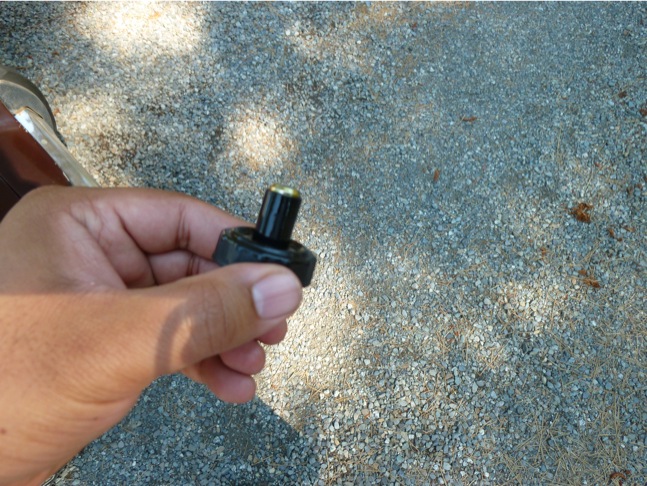
The 1/2” plug was rather clever. There’s a wing nut on the outside that clicks and locks as you rotate it, pulling the nut inside the rubber sleeve down and pulling the outer rubber upward to create a tight seal. Unfortunately, it was just a bit too small.
I then tried the universal plug and the darn thing worked perfectly.
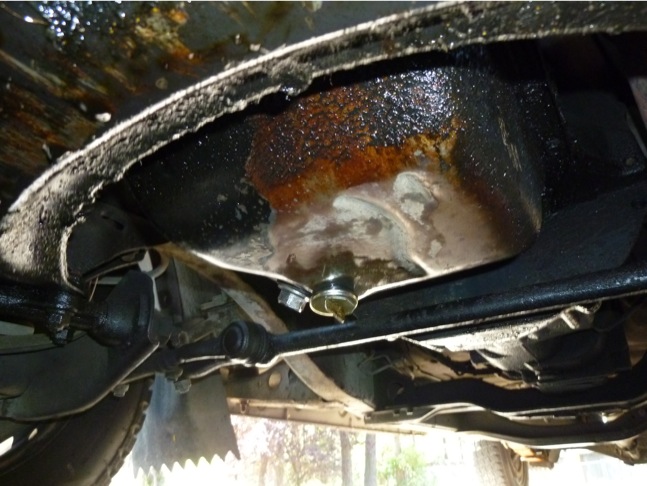
It’s a rather simple device.

The wing nut, which rotates on an axis, goes in the drain hole alongside the tip of the screw. You pull it a little as you turn to make the wingnut grip the metal while you screw it by hand until the rubber is flush against the oil pan and fixed firmly in place. The instructions say to avoid using tools and only make it hand-tight.
The problem is that when you remove it, you have to use a magnet to fish out the wing nut. You could leave it there, but that’s a bit unsettling. It’s intended to be temporary solution, enough to get you on the road until you replace the pan. My dad said he had no intention of replacing the pan and was willing to just sell the vehicle as-is, so he’s going to replace the plug with each oil change. For emergencies (in case the plug fails), he can keep an extra in the glove box along with a few quarts of oil.
Though I was eager to finally leave Spokane I was sad to say goodbye to such a loyal motoring companion. Kudos to Toyota for rekindling the simple joy of my childhood.
This old “Hilux” is perfectly sized, fuel efficient, easy to service, and fun to drive — exactly how truck ownership should be. I say, it’s time for compact pickups to make a comeback.
RATINGS:
Powertrain: 10/10 — In a word: STOUT. The carbureted 20R can handle all the abuse you can throw at it. Even after losing all of its oil, I was able to restart it and coast down down the hill to a gas station. After almost a quarter million miles it doesn’t blow smoke or misbehave in any way. What it lacks in horsepower it makes up for with adequate torque and light weight. No, you don’t want to tow horse trailers with it but it will more than suffice for typical household, landscaping, and construction site tasks. 4×4 versions are popular for off-roading.
Braking: 7/10 — The drums need adjustment (tendency to pull in one direction) but otherwise they work surprisingly well. Pedal effort is minimal.
Ride: 2/10 — Leaf springs are crude and unforgiving over potholes and ruts but once you’re on the highway its quite steady.
Steering/Handling: 5/10 – Manual steering is heavy when parking and a bit loose on-center. However, it’s stable and easy at highway cruising speeds. Because it only weighs 2500 lbs, cornering ability is more than adequate. As long as you’re aware of the limited traction and the rear end’s tendency to slide, you can have a reasonably good time driving around town or on back roads. There’s no TCS, ESP, ABS, SRS, or any other alphabetical nannies to help you. The burden is on you, the driver, to drive.
Audio/Accessories: 1/10 — My cell phone fits in the cupholder and plays MP3s. The little speaker on my phone sounds like an old AM radio, so I guess that lends the experience a bit of authenticity.
Interior: 6/10 — Few squeaks and rattles, if any at all. The cabin is quite small but highly functional. Climate controls are hard to see at night but gauges are nicely lit. At this point, the door panel pockets have sagged but none of the plastics, aside from the cracks in the dash top, have broken or come apart. All the switchgear feel substantial and over-engineered. Even the steering wheel is in good shape. The extended bed is great for hauling wood and lumber (I once picked up a used recliner at a yard sale) and the low ride height allows for easy access to cargo.
Comfort: 2/10 – The seats are oddly shaped and at this point all the padding is shot. The vinyl upholstery has seen better days. The driving position is nice, however, with a simple upright position and perfectly positioned pedals. The seats should be easy enough to replace with a junkyard set from a newer model.
Quality/Reliability: 9/10 — Body integrity is poor but mechanical dependability is excellent. Expect to replace a starter, alternator, or water pump every 100k.
Overall Value: 8.5/10 — For a few hundred bucks it’s a piece of transportation that will last forever. Here in Missouri, old Japanese vehicles are quite rare because of their vulnerability to corrosion (lots of salt on the roads each winter) so if you buy one, you have to look underneath to make sure the frame isn’t about to dissolve into a cloud of orange dust. If you’re in a milder climate, seek a local example with a maintenance history and hold on to it.
VERDICT:
If you come across a clean one, buy it. Store it in your shed with the rest of your tools.
This was, to my surprise, the most mechanical enjoyment I’ve had behind the wheel in years.
Resources:
YotaTech
Comparable:
Nissan Hardbody
Specifications:
2.2L 2-Valve SOHC I-4
95 hp @ 4800 rpm
122 lb-ft torque @ 2400 rpm
17-29 mpg depending on conditions and maintenance
5-speed synchronized manual
Rear-wheel drive
Options: Extended bed
2500-lb curb weight
Payload: ?
Made in Japan
My stepdad had a 1978 Toyota Hilux pickup truck. It had a 2.2 litre 20R 4 cylinder engine. It had only 90hp and 122lbs-ft. of torque, which may not seem like much by today’s standards, but I thought it was perfect for a truck of this size. By the time we were done using it, its body was ready to fall apart, but the drivetrain could continue indefinitely. 🙂
I just bought a 78 in good shape today with 93k on it – I agree with all you said it’s a great little truck
I drove one for several months when I was doing A/C work. At that time it had 325,000 on it,still ran and drove great. I really think they are indestructible.
I just bought a 78 and I need a manual for the wiring, the main harness has been hacked into.I would probably be better off to put a new harness in it if I could find one. Any thoughts or location of a good junk yard to search?
I have been driving my 1978 Toyota SR-5 since September 1977. I have only 149,000 miles on it. I have had a number of offers for it. I plan on driving it for at least seven more years. That will be 50 years. Not too many people can claim they have been driving the same vehicle for that many years.